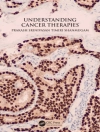A must-have companion resource to test knowledge of plastic surgery essentials
Essentials of Plastic Surgery: Q&A Companion, Second Edition by renowned plastic surgeons Alex P. Jones and Jeffrey E. Janis mirrors expanded content and new chapters in the parent book, Essentials of Plastic Surgery, Third Edition. The third edition of the parent book includes 127 chapters, which reflects the increased scope, breadth, and depth of plastic surgery since publication of the last edition. The companion book employs the same style and formatting, with select illustrations from the parent book, as well as additional unique images created for this text. The print book is accompanied by a complimentary e Book that is accessible on smartphones and tablets.
Key Features
- More than 1600 questions formatted as multiple-choice questions complement and highlight the content contained in the parent book
- Questions specifically designed to test the reader on the clinical application of this knowledge
- Succinct yet detailed answers enhance acquisition and retention of knowledge
- The conveniently compact format fits in a lab coat pocket and is designed and organized to enable quick and easy reading
This is an invaluable, go-to resource for plastic surgeons throughout training and can be used as a refresher and revalidation of knowledge as their careers progress.
This print book includes complimentary access to a digital copy on https://medone.thieme.com.
Table of Content
Part I Fundamentals and Basics
1 Wound Healing
2 General Management of Complex Wounds
3 Sutures and Needles
4 Basics of Flaps
5 Perforator Flaps
6 Tissue Expansion
7 Vascularized Composite Allografts and Transplant Immunology
8 Basics of Microsurgery
9 Biomaterials
10 Negative Pressure Wound Therapy
11 Lasers in Plastic Surgery
12 Anesthesia
13 Pain Management in Plastic Surgery
14 Photography for the Plastic Surgeon
15 Decreasing Complications in Plastic Surgery
Part II Skin and Soft Tissue
16 The Bascis of Skin
17 Basics of Plastic Surgery: Wound Closure
18 Scars and Scar Management
19 Skin Grafting
20 Basal Cell Carcinoma, Squamous Cell Carcinoma, and Melanoma
21 Burns
22 Vascular Anomalies
23 Congenital Melanocytic Nevi
Part III Head and Neck
24 Head and Neck Embryology
25 Surgical Treatment of Migraine Headaches
Congenital Conditions
26 Craniosynostosis
27 Craniofacial Clefts
28 Distraction Osteogenesis
29 Cleft Lip
31 Cleft Palate
31 Velopharyngeal Dysfunction
32 Microtia
33 Prominent Ear
Traumatic Injuries
34 Facial Soft Tissue Trauma
35 Facial Skeletal Trauma
36 Mandibular Fractures
37 Basic Oral Surgery
Acquired Deformities
38 Principles of Head and Neck Cancer: Staging and Management
39 Scalp and Calvarial Reconstruction
40 Eyelid Reconstruction
41 Nasal Reconstruction
42 Cheek Reconstruction
43 Ear Reconstruction
44 Lip Reconstruction
45 Mandibular Reconstruction
46 Pharyngeal and Esophageal Reconstruction
47 Facial Reanimation
48 Face Transplantation
Part IV Breast
49 Breast Anatomy and Embryology
50 Congenital Breast Deformities
51 Breast Augmentation
52 Mastopexy
53 Augmentation-Mastopexy
54 Breast Reduction
55 Gynecomastia
56 Breast Cancer
57 Autologous Breast Reconstruction
58 Implant-Based Breast Reconstruction
59 Secondary Breast Reconstruction
60 Nipple-Areolar Reconstruction
Part V Trunk and Lower Extremity
61 Chest Wall Reconstruction
63 Abdominal Wall Reconstruction
63 Posterior Trunk Reconstruction
64 Perineal Reconstruction
65 Genitourinary Reconstruction
66 Pressure Sores
67 Lower Extremity Reconstruction
68 Foot Ulcers
69 Lymphedema
Part VI Hand, Wrist, and Upper Extremity
70 Hand Anatomy and Biomechanics
71 Basic Hand Examination
72 Congenital Hand Anomalies
73 Carpal Bone Fractures
74 Carpal Instability and Dislocations
75 Distal Radius Fractures
76 Metacarpal and Phalangeal Fractures
77 Phalangeal Dislocations
78 Fingertip Injuries
79 Nail Bed Injuries
80 Flexor Tendon Injuries
81 Extensor Tendon Injuries
82 Tendon Transfers
83 Nerve Transfers
84 Hand and Finger Amputations
85 Replantation
86 Hand Transplantation
87 Targeted Muscle Reinnervation
88 Hand Rehabilitation
89 Thumb Reconstruction
90 Soft-Tissue Coverage of the Hand and Upper Extremity
91 Compartment Syndrome
92 Upper Extremity Compression Syndromes
93 Brachial Plexus
94 Nerve Injuries
95 Hand Infections
96 Benign and Malignant Masses of the Hand
97 Dupuytren’s Disease
98 Rheumatoid Arthritis
99 Osteoarthritis
100 Vascular Disorders of the Upper Extremity
Part VII Aesthetic Surgery
101 Aesthetic Facial Anatomy
102 Facial Analysis
103 Basics of Skin Care
104 Neurotoxins
105 Soft-Tissue Fillers
106 Chemical Peels
107 Fat Grafting
108 Hair Transplantation
109 Brow Lift
110 Blepharoplasty
111 Blepharoptosis
112 Face Lift
113 Neck Lift
114 Perioral Rejuvenation
115 Rhinoplasty
116 Secondary Rhinoplasty
117 Genioplasty
118 Liposuction
119 Brachioplasty
120 Abdominoplasty
121 Medial Thigh Lift
122 Body Contouring in the Massive-Weight-Loss Patient
123 Buttock Augmentation
124 Male Aesthetic Plastic Surgery
125 Female Aesthetic Genital Plastic Surgery
126 Gender Affirmation Surgery
127 Noninvasive Body Contouring












